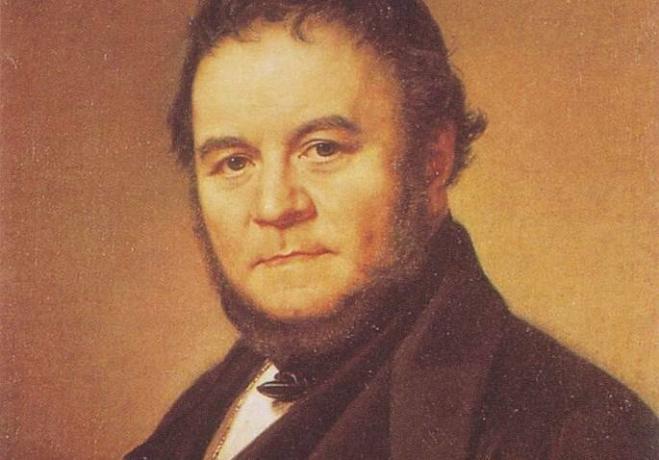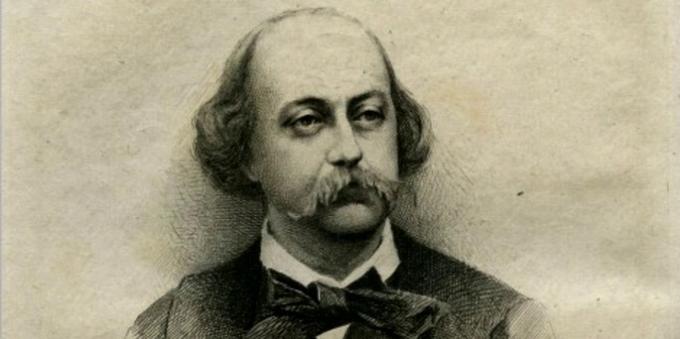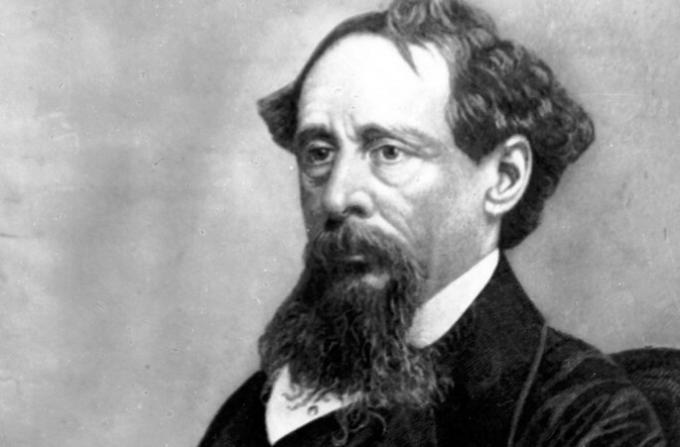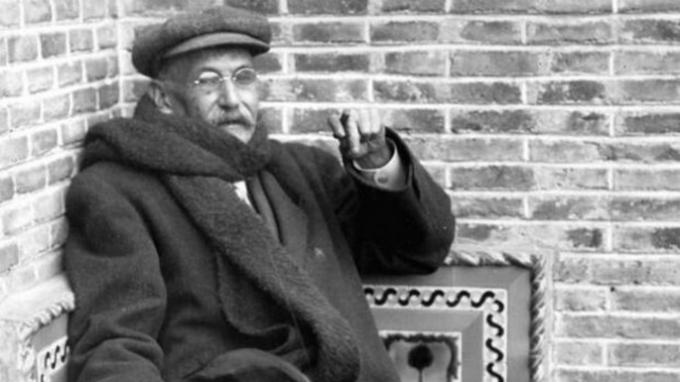Literary realism: meaning, characteristics and authors
The literary realism It is a current that developed in Europe in the second half of the 19th century and made its way during the decline of romanticism.
This tendency moves away from the fantasy and imagination prevailing during the first half of the 19th century in order to explain and analyze social reality. It also supposes instead a change in the language and style of the previous period.
The novel is imposed in this period as the most prominent and appropriate literary manifestation for watch, reflect Y explain social reality.
Literary realism It arose in France but soon developed in other countries. But, what were its characteristics and its main representatives? What were the reasons for this trend? In what context?
Next, let's know everything about this literary trend.
Characteristics of literary realism
Like all current the literary realism presents a series of features. That is, a set of peculiarities in content and form that distinguish it from others. Thus, the characteristics of realism, relative to the technique and the form of creation, can be summarized in the following points:
- Observation and accurate description of reality: nature "is as it is" and this is how the authors express it in their literary works. It is something very similar to what the experimental sciences do through the methods of observation.
- Social and political criticism: Realist authors write with the purpose of denouncing the conflicts of daily life, which is why in their novels they always critically postulate society and politics. The final purpose of the work is to contribute, in one way or another, to transformation and social change.
- The bourgeoisie as the protagonist: generally the characters of literary realism belong to this social class. The characters can be individual or complete social groups, which serve to denounce and try to repair the problems of daily life.
- The novel as a literary genre par excellence: for realist writers the novel was the most suitable means to capture reality.
- The realist novel stands out for having a linear structure and chronological events.
- Use of omniscient narrator who manages and leads the narration.
- Interior monologue: Apart from the use of the omniscient narrator, this narrative technique appears more and more frequently in the novels, through which the intimate thoughts of the characters are revealed.
- Verisimilitude: there is a clear opposition to fantasy literature, which translates into a constant attempt to create credible stories, almost as if they were a “fragment of reality”.
- Clear and concise language: the narrator expresses himself through an austere language and presents a clear and exact style to avoid difficulty of understanding in the reader. On the other hand, the language of the characters adapts to their social condition. Thus, in realistic novels different registers and levels of language appear.
Meaning and origin of literary realism
To define the word "realism" we must pay attention to its etymology. On the one hand, it is composed of the Latin root realis- (real or true) and, on the other hand, by the Greek suffix -ism (movement or trend). So, we can understand the concept of realism as "a movement that aims to faithfully represent reality."
Literary realism can be defined as a cultural movement that arises in France during the second half of XIX century with the authors Balzac Y Stendhal as main drummers, and Flaubert, who establishes literary realism as an independent concept. Later, the current began in Spain, as a consequence of the social and political situation of the moment, and in Latin America.
The origin of literary realism It is given by an ideological change that leaves behind the individualism of the bourgeoisie to make a detailed study of society, the real and the everyday.
Background and context of literary realism
Before realism there was romanticism, a cultural movement that takes place at the end of the 18th century in Germany, England and France. Then it takes place in the first half of the 19th century in different western countries.
This current stood out mainly for its individualistic character and for the expression of individual freedom through the arts, in the face of imposed values and social problems.
Literary realism arises in the decline of romanticism and comes to break individual freedom, which is replaced by the need to explain and analyze the social reality of the moment. On the other hand, it appears as a consequence of a specific social, political and ideological context:
- Social: the discontent of the working class gives rise to different revolutions in defense of the rights of the workers.
- Political: the bourgeoisie consolidates in power and tends towards conservative positions to defend and protect the rights that they had achieved so far. The governments that are established at that time are also traditionalist in character.
- Ideological: the philosophical current of positivism spreads among the bourgeoisie, for which there is no other way of knowing the world other than through the scientific method, through the empirical study of facts.
Authors and works of literary realism
These are the main representatives of literary realism and his works, attending to his country of origin and development of his work:
France: Stendhal, Balzac and Flaubert
France was the country that gave birth to the royalist movement. There arose some of the most important novels of universal literature. Stendhal, Balzac Y Flaubert they were the most representative authors of French realism.
Stendhal

His real name was Henry beyle (1783- 1842). In his works he stood out for making use of the direct style and for him psychological analysisOf the characters. On the other hand, deception and selfishness were recurring themes in his work. He also made a criticism of class society and the conventions of him.
For Stendhal, as he indicated in his work Red and black, the novel is “a mirror that walks along a royal road. As soon as it reflects the blue sky like the mud of the road swamps ”. His most outstanding works are:
- Armancia (1826)
- Red and black (1830)
- The Charterhouse of Parma (1839)
Honoré de Balzac

Honoré de Balzac (1799-1875) was a French novelist. He is often considered the father of literary realism and also one of the most influential great writers of his time.
The most representative work of him is Human Comedy, a total of 137 novels are part of this project, of which 50 remained unfinished. Balzac was characterized by making a criticism of French society and the hypocrisy contained in it.
Flaubert

Gustave Flaubert (1821-1880) was one of the greatest representatives of French realism. His work contributed to the renewal of literary techniques during the second half of the 19th century. On the other hand, he emphasized doing a psychological study of the characters and for developing a portrait of the society of the time in his novels.
Likewise, he was the creator of MadamBovary, one of the top works of universal literature. With her he settled one of the most recurrent themes of later realistic and naturalistic literature: female dissatisfaction. Some of the most representative novels of him were:
- Memories of a madman (1838)
- November. Fragments of any style (1842)
- Madam bobary (1857)
- Salambo (1862)
- Sentimental education (1869)
- The temptation of San Antonio (1874)
Great Britain: Dickens and Thackeray
On England realism arises during the reign of Queen Victoria, also coincides with the period of the Industrial Revolution. However, it did not break through with as much force as in other countries such as France. The novel becomes the literary genre par excellence for realistic authors. Dickens and Thackeray were some of the most influential authors of English realism.
Charles dickens

Charles dickens (1812-1870) was a British writer and novelist, the highest representative of the realist novel in England. His work stood out for the combination of tragic elements Y comedians. Also for the creation of complex characters. The chapters of his novels stand out for maintaining the intrigue between one and another. The best known novels of him were:
- The Posthumous Papers of the Pickwick Club (1836-1837)
- Oliver twist (1837-1839)
- Nicholas nickleby (1838)
- David copperfield (1849-1850)
- Desolate house (1852-1853)
- History of two cities (1859)
- Big hopes (1860-1861)
- Our mutual friend (1864-1865)
William Makepeace Thackeray

William Makepeace Thackeray (1811-1863) was a British writer and novelist of realism and one of the most recognized along with Charles Dickens, his main competitor and main influence on his early novels. He was the author of The vanity fair, one of the most recognized novels of him. In his work he stood out for making an analysis psychological character and by making use of a satirical language and ironic. Among titles, the following stand out:
- The luck of Barry Lyndon (1844)
- The Vanity Fair (1847)
Russia: Dostoyevsky, Tolstoy and Chekhov
During the second half of the 19th century In Russia, the need to reflect society and its misfortunes through literature is also awakened among some authors. Between the representatives most influential Russian literary realism are found Fyodor Mikhailovich Dostoevsky, Leon Tolstoy or Anton Chekhov.
Fyodor M. Dostoyevsky

Dostoyevsky (1821-1881) was one of the most important authors of Russian literature of the 19th century. His work involved a meticulous analysis of the psychology of the human being and a vivid portrait of Russian society, thanks to the creation of great and strong characters. The Social problems, the power or death were some of his concerns. His most outstanding works are:
- Memories of the house of the dead (1861- 1862)
- The Karamazov brothers (1880)
- The demons (1871-1872)
- The player (1866)
- Crime and Punishment (1866)
Leo Tolstoy

Leo Tolstoy (1828-1910) is one of the greatest representatives of the realist novel and one of the most important authors of universal literature.
The society Y the search for the meaning of life were some of his great concerns. This is how he captured it in his works that represented a portrait of the Russian society of the moment, Tolsty also stood out for the ability to delve into the soul and the psychology of his characters. The most representative novels of him were:
- War and peace (1864-1869)
- Ana Karenina (1874-1876)
- My confession (1879-1882)
- Resurrection (1899)
Anton Chekhov

Anton Pavlovich Chekhov It was a big playwright and one the highest representatives of Russian realism. He especially excelled in the theater and also by the creation of a crowd stories. In his works he expressed a criticism of the society of his time. Among his most recurring themes are: human life problems, the poverty wave loneliness. Characters often show their frustrations and concerns. Among his stories and plays, the following stand out:
- The bear and the request for a hand (1889)
- Seagull (1896)
- The cherry garden (1904)
Spain: Benito Pérez Galdós and Leopoldo Alas "Clarín"
In Spain, realism was not fully imposed until the revolution of 1868, hence the realist authors were known as "Generation of 68".
Benito Pérez Galdós

Benito Pérez Galdós he was one of the great Spanish writers of the 19th century and one of the greatest representatives of the Spanish realist novel. Likewise, he was an author with an inexhaustible creative capacity, as he demonstrated with a total of 32 novels, 46 national episodes, 24 plays and a large number of articles and collaborations in newspapers of the epoch.
Pérez Galdós tried to make a critical testimony of life and the problems of the Spain of his time. Something remarkable in his novels was the description Y creation of environments. He too indirect free style and the use of Interior monologue. Galdós wrote more than a hundred titles, among which the following stand out:
- The disinherited (1881)
- Perfect Lady (1886)
- Fortunata and Jacinta (1887)
- Mercy (1897)
Leopoldo Alas "Clarín"

Leopoldo Alas "Clarín" (1852-1901) was a journalist, literary critic, and university professor. Likewise, he was the author of The Regent, one of the greatest works of realism and one of the great Spanish novels of all time. He stood out for making a analysis of the social environment. The church influence, the envy or the ambition are some recurring themes. "Clarín" had a great influence of naturalism, for this reason it mixed some realistic and naturalistic aspects. His novels were:
- Downhill (1890- 1891)
- The Regent (1884-1885)
- His only son (1890)
- Pelayo's hug (1889)
USA
In the United States the novel develops later and appears as a European influence. However, there is no realist school as such within literature. The works present a less social character although they present a transcendental style that reflects on the reality of the moment.
Mark Twain

His real name was Samuel Langhorne Clemens but he adopted the nickname of Mark Twain (1835). He was an American writer known for two of his great novels The Adventures of Tom Sawyer (1876) and The Adventures of Huckleberry Finn (1885). His work was very anchored to realism and he wrote texts where he questioned and denounced imperialism and slavery in American society.
Hispano-America
At the end of the 19th century, realism was introduced in Latin America, very attached to Romanticism. The most frequently used themes were social and political problems or customs.
Alberto Blest Wins
Alberto Blest Wins (1829-1904) was a Chilean writer and diplomat and the promoter of the realist novel in Latin America. His work was highly influenced by Balzac and he tried to analyze the Chilean society of the moment in it. Likewise, he wanted to describe the social problems of the poorer classes. Among his works stands out:
- Arithmetic in love (1860)
Clorinda Matto de Turner

Clorinda Matto de Turner (1852-1909) was a Peruvian writer and the initiator of the indigenous genre. In his novel Birds without nest (1889) she narrated the unfortunate situation of the Indians in Cuzco, where the population lives in isolation under the tyranny of the political and religious authorities. Her literary work is composed of three novels:
- Birds without a nest (1889)
- Nature (1891)
- Inheritance (1893)
Tomás Carrasquilla

Tomás Carrasquilla (1858-1940) was a Colombian author who wrote books such as Fruits of my land (1896), his first novel, which narrates the hard life of provincial families. Her work stands out for having a traditional style.
If you liked this article, You may also like:
- Literary trends
- Naturalism



